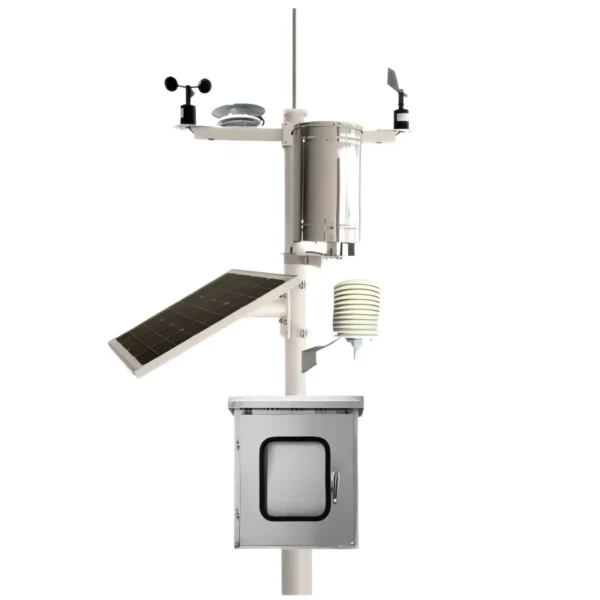
# Automatic Weather Station: Definition and Functionality
An Automatic Weather Station (AWS) is a sophisticated system designed to collect and record meteorological data automatically. Unlike traditional weather stations that require manual observation and recording, AWS operates autonomously, providing continuous and accurate weather information.
## What is an Automatic Weather Station?
An Automatic Weather Station is a network of sensors and instruments that measure various atmospheric parameters. These parameters typically include temperature, humidity, wind speed, wind direction, precipitation, and atmospheric pressure. The data collected by these sensors is transmitted to a central processing unit, which then processes and stores the information for further analysis.
### Components of an Automatic Weather Station
An AWS typically consists of several key components:
– Sensors: These are the primary instruments that measure weather parameters. Common sensors include thermometers for temperature, hygrometers for humidity, anemometers for wind speed, and barometers for atmospheric pressure.
– Data Logger: This device records the data collected by the sensors. It stores the information in a digital format, making it easy to retrieve and analyze.
– Communication System: AWS often includes a communication system that transmits the collected data to a central server or database. This can be done via wired connections, wireless networks, or satellite links.
– Power Supply: Since AWS operates continuously, it requires a reliable power source. This can be a combination of solar panels, batteries, and grid power.
## Functionality of an Automatic Weather Station
The primary function of an Automatic Weather Station is to provide real-time and accurate weather data. This data is crucial for various applications, including weather forecasting, climate research, agriculture, and disaster management.
### Weather Forecasting
AWS plays a vital role in weather forecasting by providing continuous and precise data. Meteorologists use this data to predict weather patterns, issue warnings, and prepare for severe weather events. The real-time data from AWS helps in improving the accuracy of weather forecasts, which is essential for public safety and economic activities.
### Climate Research
Climate researchers rely on AWS data to study long-term climate trends and variations. The continuous and accurate data collected by AWS helps in understanding climate change, identifying patterns, and developing models to predict future climate scenarios.
### Agriculture
Farmers and agricultural experts use AWS data to make informed decisions about planting, irrigation, and harvesting. Accurate weather information helps in optimizing crop yields, reducing water usage, and minimizing the impact of adverse weather conditions on agriculture.
### Disaster Management
In disaster-prone areas, AWS provides critical data that helps in early warning and preparedness. For instance, data on wind speed and precipitation can be used to predict and prepare for hurricanes, floods, and other natural disasters. This information is vital for saving lives and minimizing property damage.
## Conclusion
Automatic Weather Stations are indispensable tools in modern meteorology and environmental monitoring. By providing continuous, accurate, and real-time weather data, AWS enhances our ability to understand and respond to atmospheric conditions. Whether for weather forecasting, climate research, agriculture, or disaster management, the functionality of AWS is crucial for a wide range of applications.
Keyword: what is automatic weather station